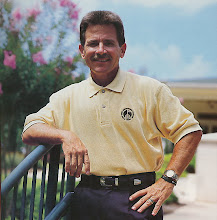Winter weather can have different affects on the golf course turf.
A nice snow cover is the best condition for a golf course during the winter. Even a complete blanket of snow allows for a sufficient amount of oxygen availability for the turf below. The snow cover also protects the from the harsh dry winter winds which can desiccate and damage the grass plant.
The worst situation for turf during the winter is the formation of a layer of ice over the surface of the turf. A solid layer of ice restricts oxygen availability to the plant. If this ice layer exits for a 40 plus day period then some species of turf can expire.
Shade is also an undesirable and negative influence on turf.
The photo below shows a shaded ice layer on our small putting green.
We have received record setting temperatures this winter

Winter turfgrass disease -
An ugly site and dead turf
The one negative affect of excessive snow during the winter months is the resulting wetness in the spring. North Shore springs are normally very cool and wet. Once the snow melts, the cooler lake effect temperatures prevent the course from drying out. The result is the melted snow causes softer, wetter conditions until warmer temperatures arrive. Expect the course to be wetter and softer this spring until the warmer temperatures arrive to dry it out. We currently have almost two feet of snow cover on the course. This equates to almost 3 inches of water that will melt onto the playing surface.
Chicago snow totals for the season are currently more than twice the normal amount.!!!!!!
Below, John and Todd are digging into the snow on #1 red green to check for ice layers at the green's surface to determine if we have adequate oxygen exchange for the turf to survive the winter conditions.
We were exposed to 25 days where the temperatures remained below the 32 degree freezing mark. This extended cold extreme has not been approached since the record was set in 1895 of 25 days below freezing. This extent of cold can likely affect the health of turf, ornamentals and trees during the coming spring.
This amount of snow and ice not only affects the spring golfing conditions but our operating budget as well. Overtime payroll hours and increased salt purchases are the two budget areas that are the most influenced.
Below, the staff attempts to clear snow from the cart paths.











